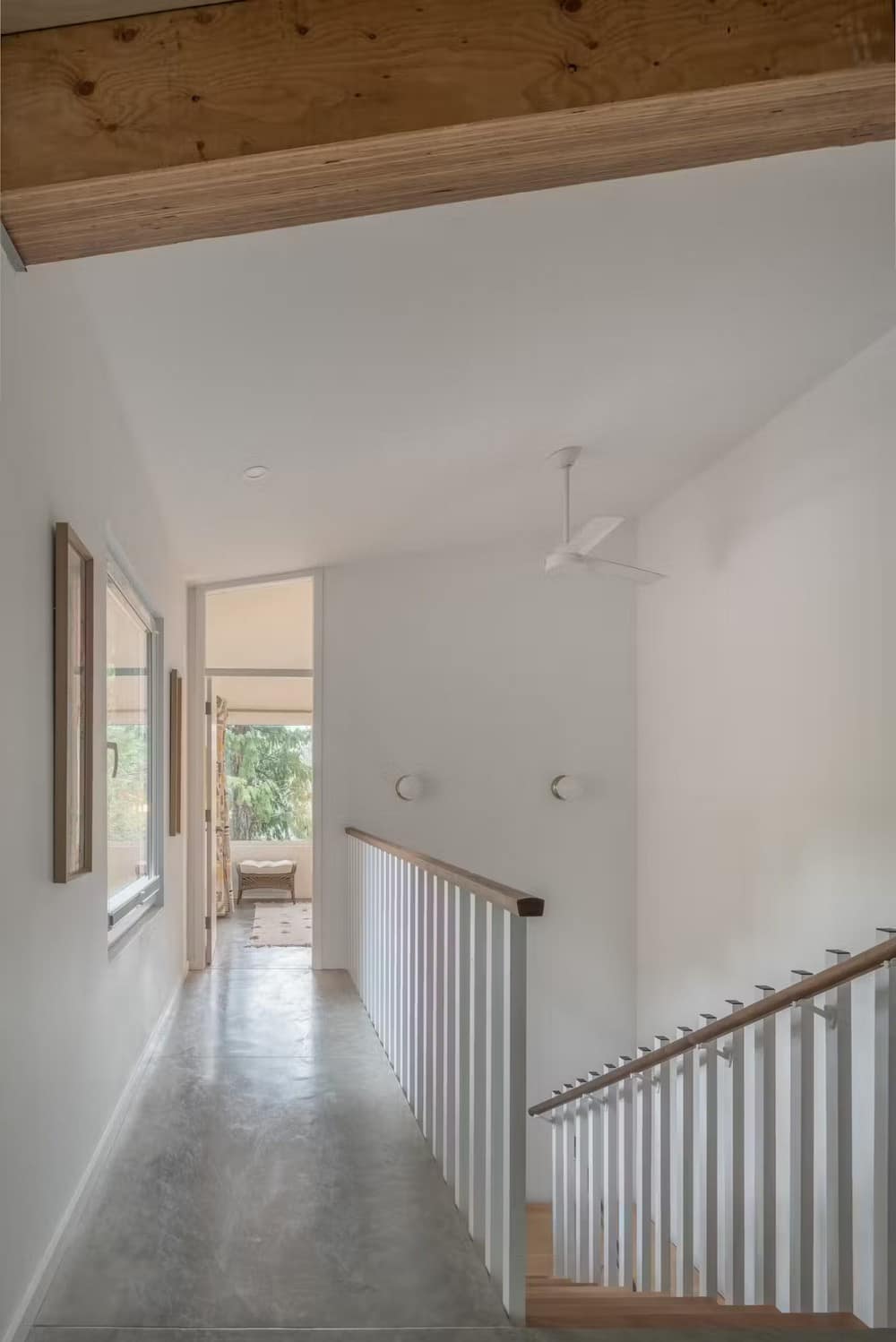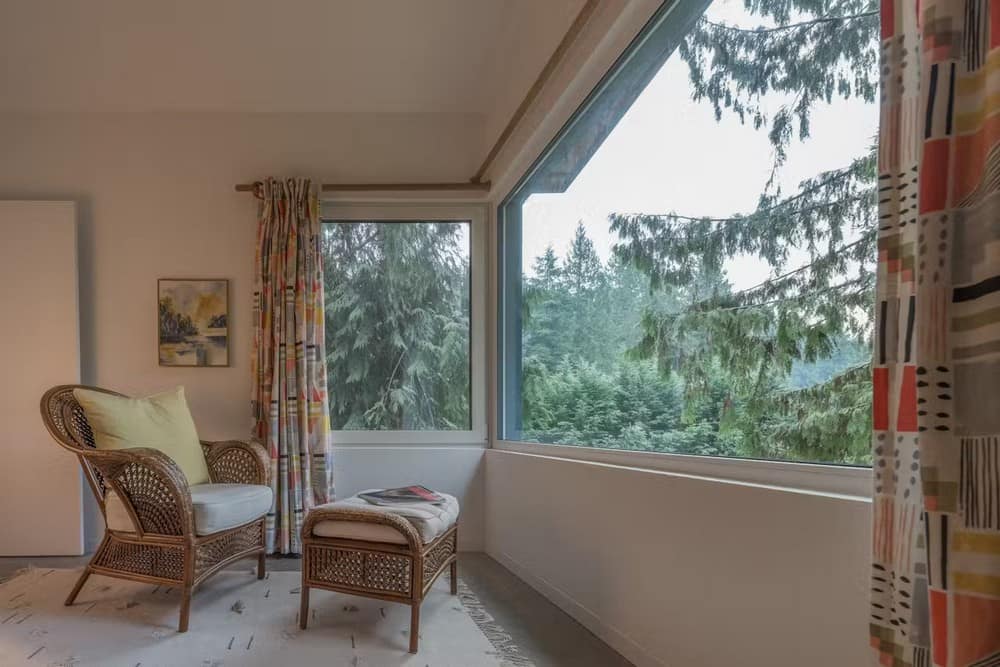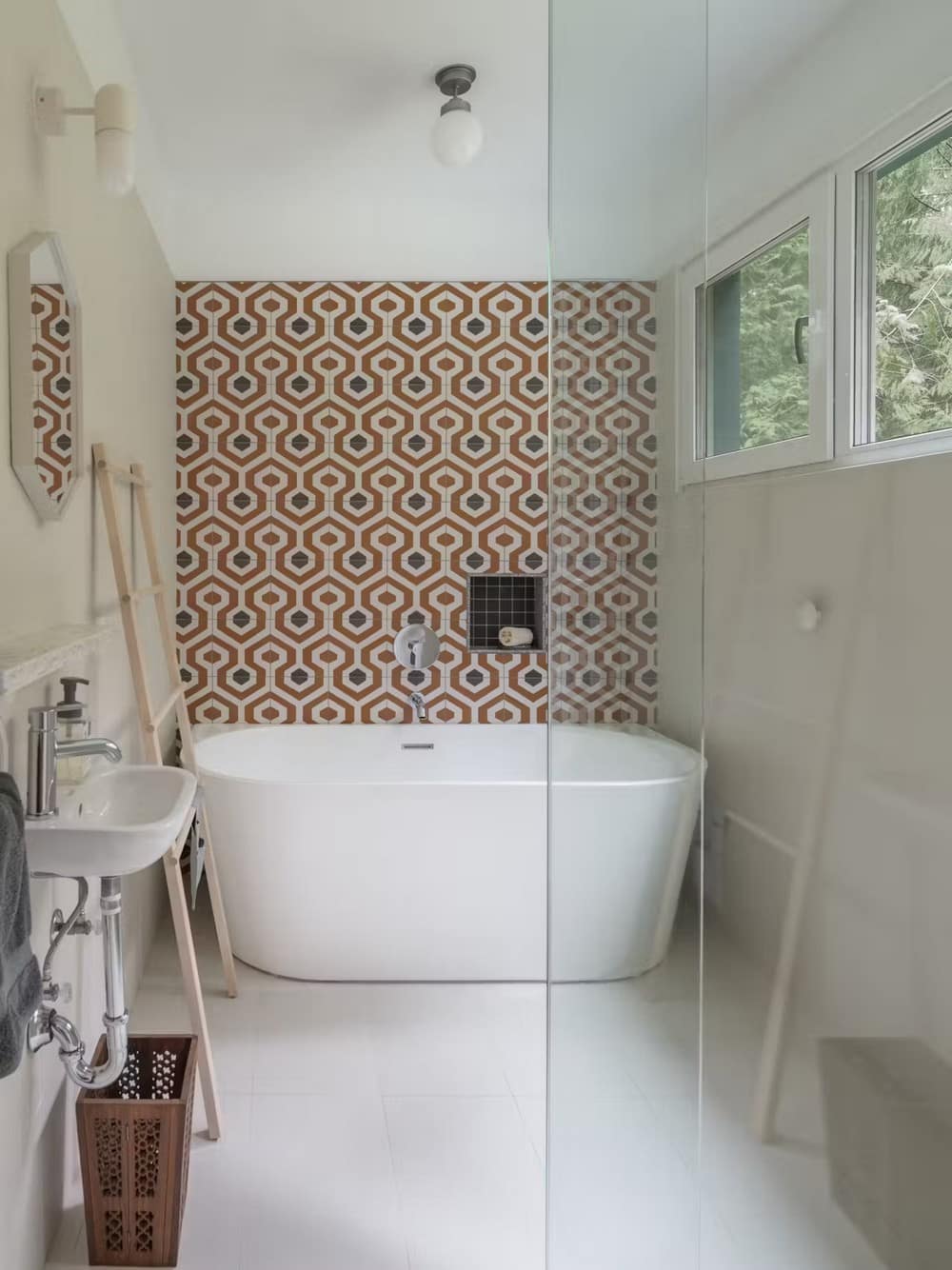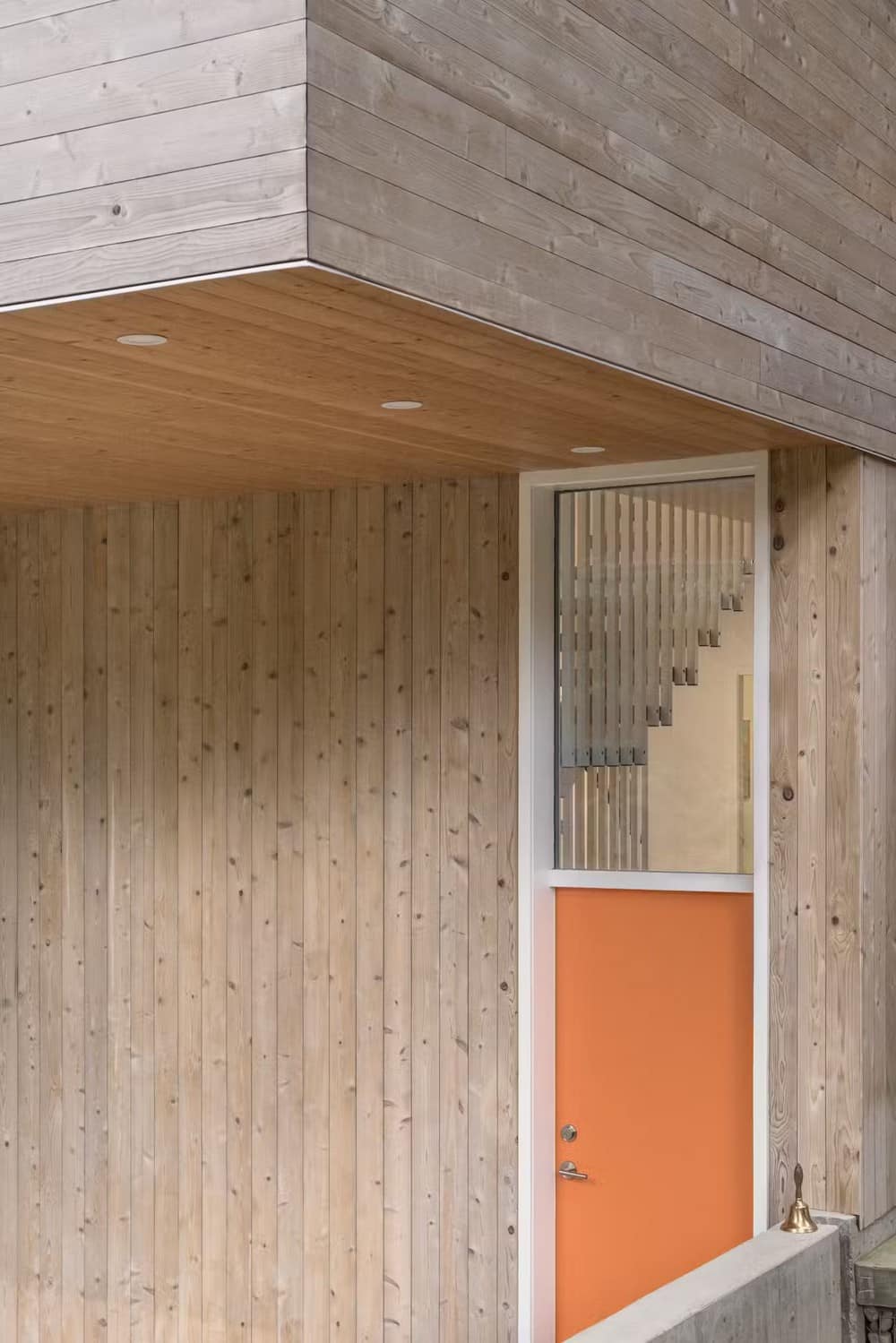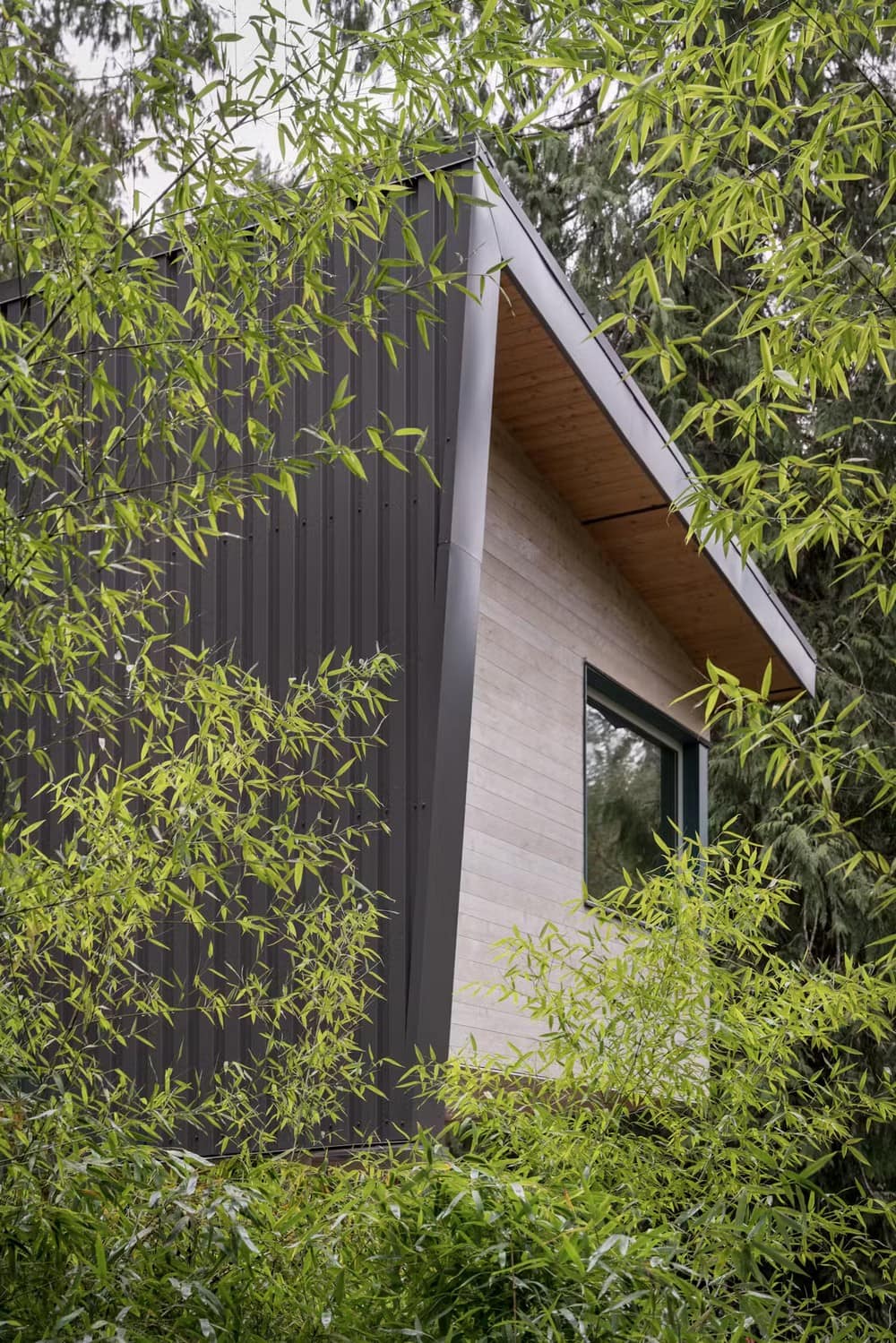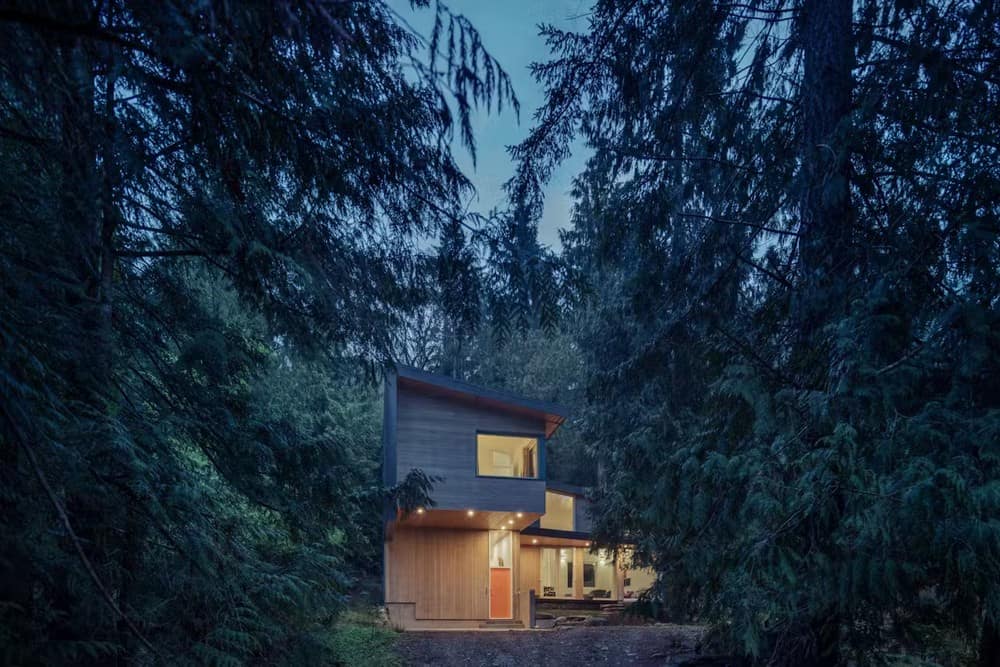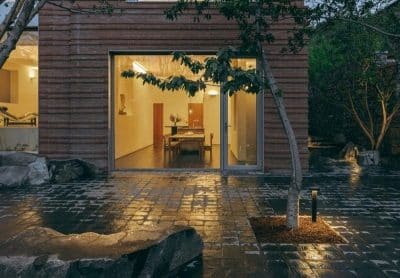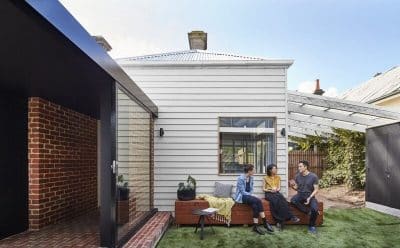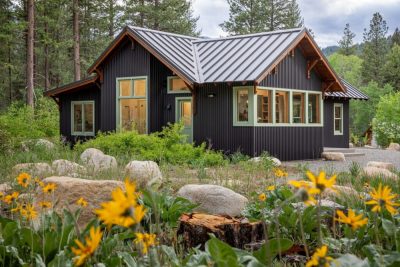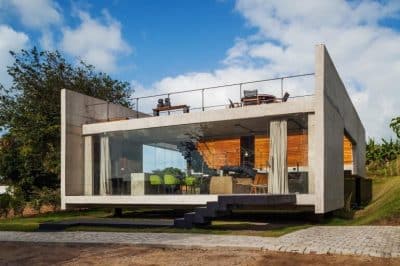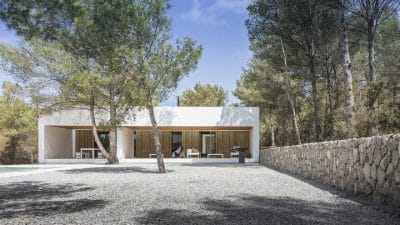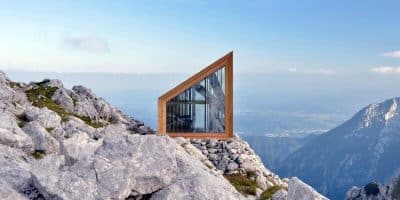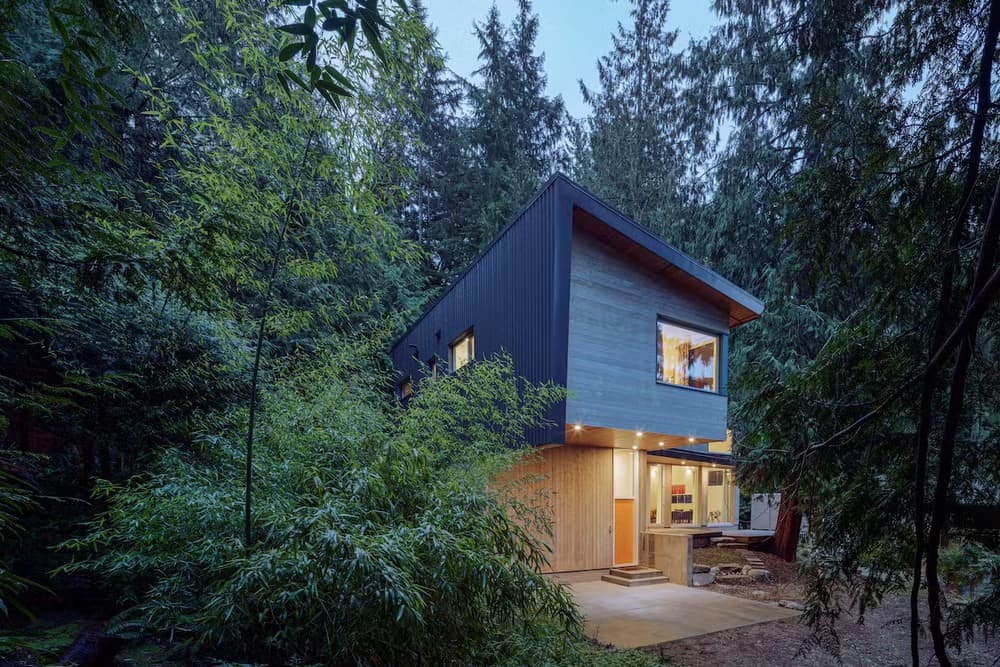
Project: Tuwanek Forest Retreat
Architects: Studio Senbel
Location: Sechelt, British Columbia, Canada
Area: 1800 ft2
Year: 2019
Photographs: Kevin Jamieson
The Tuwanek Forest Retreat is located in the village of Tuwanek at the base of Mt. Richardson on the shores of Sechelt Inlet in B.C. The steep site was heavily treed with mature western red cedars, alders, maples and a douglas fir. The trees are the treasure and the beauty of this site.
The desire to retain as many trees as possible was both an experiential design intent and an environmental mandate. Deforestation due to logging and human development has damaged ecosystems here in B.C. and impacted global climate patterns. The design challenge was to create a building that sits lightly in place, creating a living space in the forest that simultaneously preserves, interacts with and celebrates the trees.
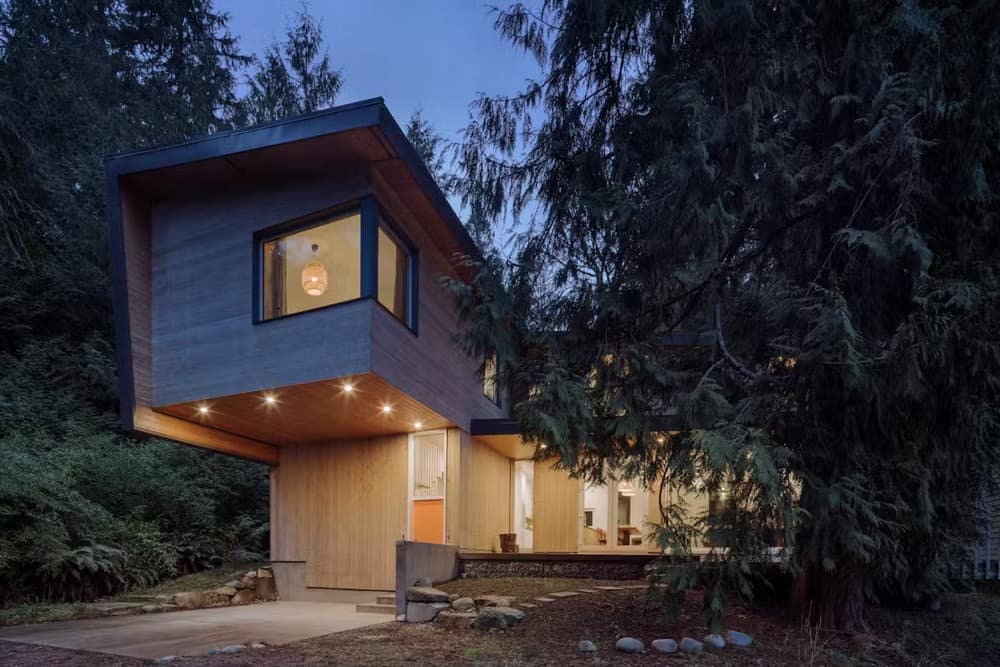
After careful consideration of building placement and consultation with an arborist, it was determined to fell the deciduous trees and retain all the large coniferous trees: 4 western red cedars and a douglas fir. An L-shaped floor plan was carefully fitted between two of the cedar trees. Precisely placed fenestration invites the forest environment and natural light to the interior spaces. The master bedroom cantilevers within the tree-tops.
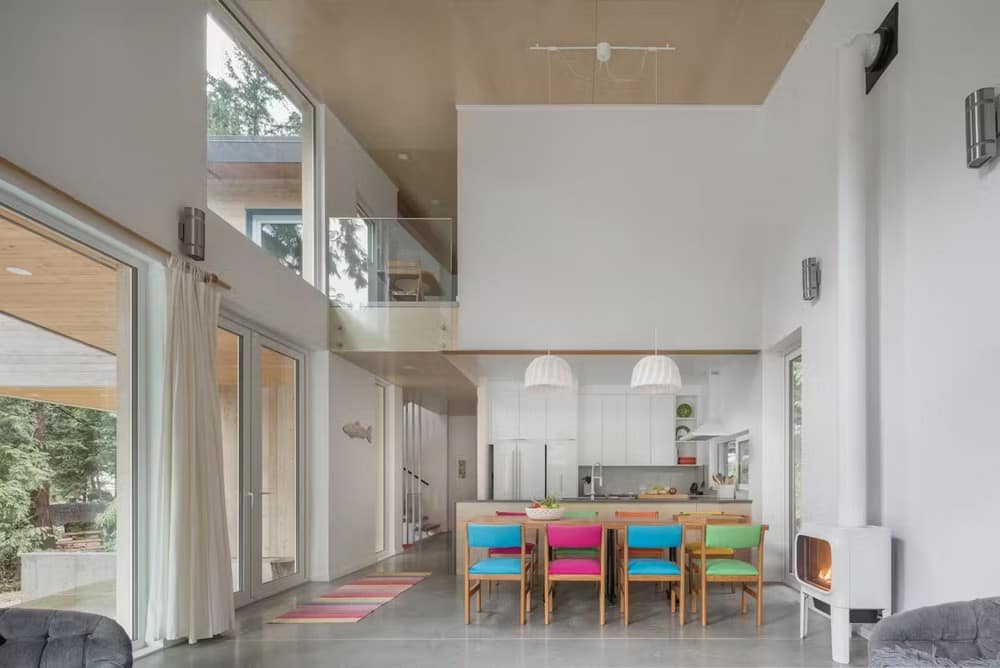
Structural insulated panels (SIPs) were selected to minimise the construction footprint and decrease framing time – the complete shell and PSL structural frame was erected in five days. In addition, the SIPs (6 ½” wall panels and 12 ¼ ” roof panels) provide superior air tightness and insulation performance.
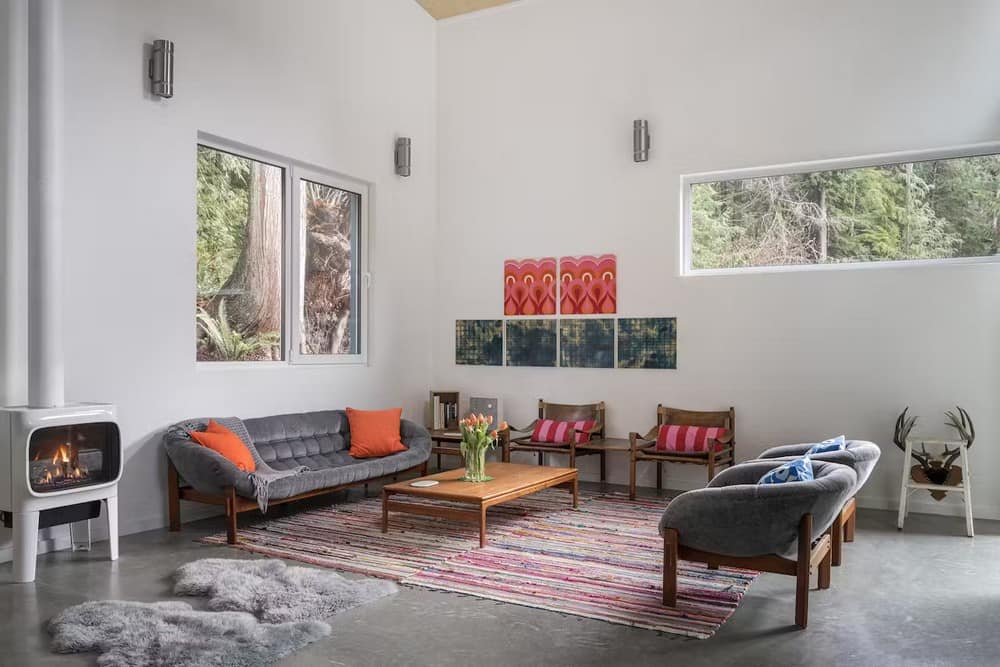
The choice of exterior cladding is intended to express a building crafted of materials of the site – if not literally from the site. The building cladding is western red cedar siding and the extensive soffits are douglas fir. Each material is used where it would perform best: the red cedar, with it natural tannins that are resistant to rot, is more appropriate in the location where it is in direct contact with moisture; the douglas fir in the overhangs where it is protected from direct rain exposure.
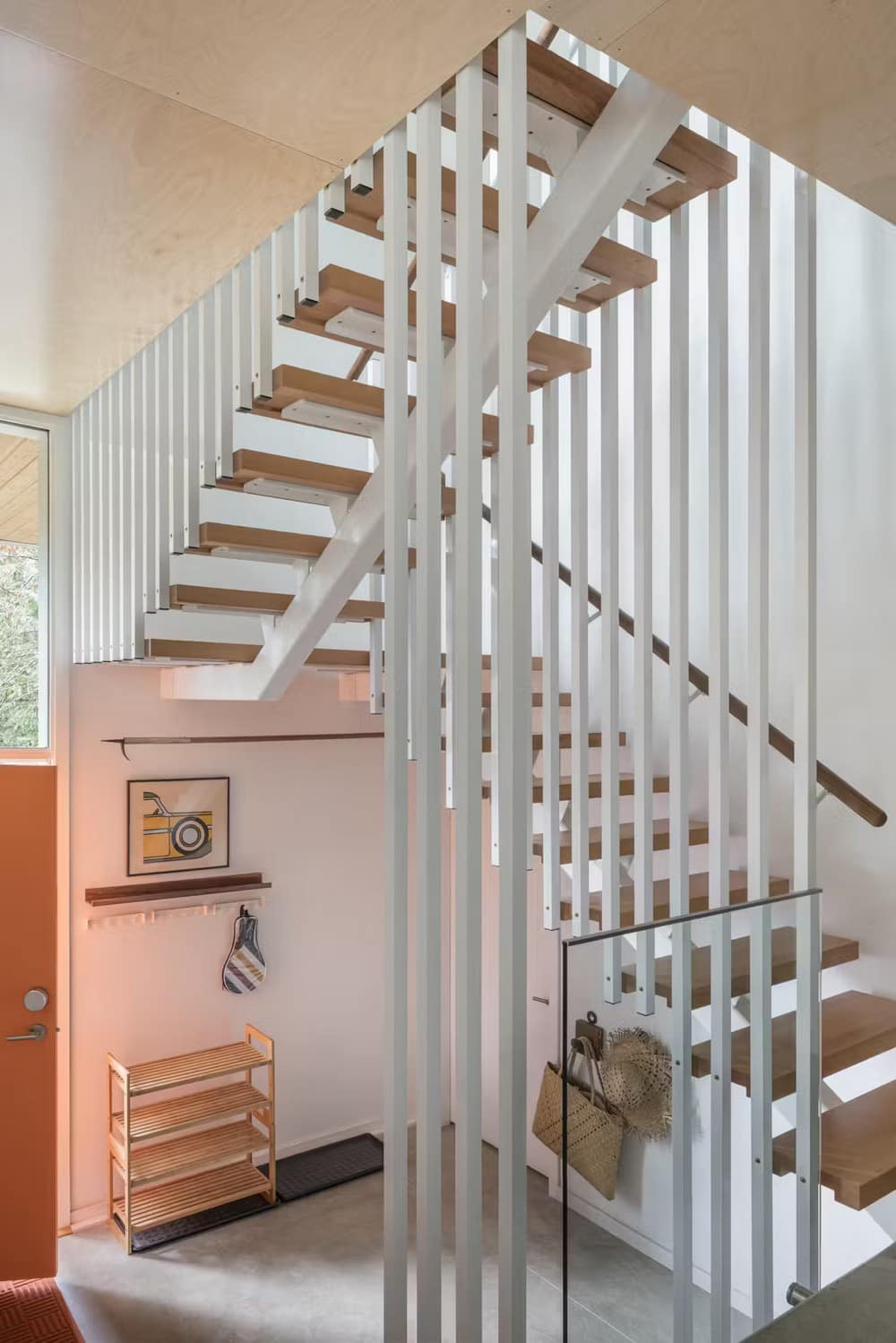
To achieve a bright interior the designer chose an open plan concept and tall spaces contained by white painted walls and light coloured materials. Wood was used discretely to add colour, texture and warmth. Clear maple plywood panels are used in the ceilings and millwork elements. European beechwood treads and American mahogany handrails animate the central staircase. The furniture includes a dining table crafted from a glulam beam salvaged from a high-school gym and vintage teak and rosewood living room pieces.
